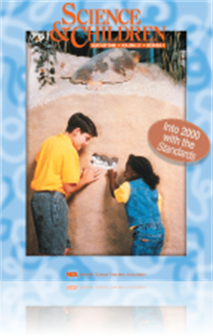All Resources
Journal Article
How Can We Put Cooperative Learning Into Practice?
Research suggests that if you want more students to learn more material, if you want students to feel more confident about themselves, and to be motivated to learn, if you want them to accept differences among students, then you should have your stud...
Journal Article
When science teachers pass up the use of an inductive approach in their teaching, they miss a golden opportunity to improve their chances of attaining one of their avowed and highly regarded objectives of science teaching—the development of ability...
Journal Article
There’s No Such Thing as a One-Celled Plant or Animal
Early biologists classified living organisms based on what they knew about life: All living things were either animals or plants. The fossil record as late as the 18th and 19th centuries seemed consistent with this two-part scheme. In recent years, m...
Journal Article
Editor's Note: Happy New Year and Welcome to the New Millennium
Science and Children’s editor shares thoughts regarding the current issue....
Journal Article
The idea for the Scope, Sequence, and Coordination (SS&C) reform effort was conceived in the early 1980s, primarily in response to practices in U.S. secondary schools that filter out the majority of students from higher level science courses. The cur...
Journal Article
What’s It Like Where You Live? Meeting the Standards through technology-enhanced inquiry
“What’s It Like Where You Live?” is a unit that involves an extended comparison of biomes, defined as regions characterized by distinctive climate, plants, and animals. By designing the curriculum around the Standards, the author was able to su...
Journal Article
The Constructivist Learning Model
Much cognitive science research has been used to support a new model of learning. This most promising new model is called the Constructivist Learning Model (CLM). Russell Yeany (University of Georgia) has called CLM the most exciting idea of the past...
Journal Article
In 1669, a German alchemist named Hennig Brandt identified the element we now call phosphorus. He was the first in his craft to be immortalized because his work marks the beginning of the period when chemical investigators kept detailed records. Fift...
Journal Article
Analyzing the <em>Standards</em>: Looking at using and possibly misusing the science standards
Be they from Benchmarks for Science Literacy, the National Science Education Standards, or a state curriculum framework, standards offer educators a common foundation upon which to base curriculum, instruction, and assessment. Implicit in the efficac...
Journal Article
The U.S. science education community has been alternately encouraged and disheartened by the results of the Third International Mathematics and Science Study (TIMSS). While our fourth graders outperformed students from most countries, our eighth grad...
Journal Article
It is very important to show how open-mindedness and tolerance, or their lack, function in social situations. Ask the pupils to cite personal experiences, or the statements and actions of prominent people, to illustrate the part played in everyday li...




